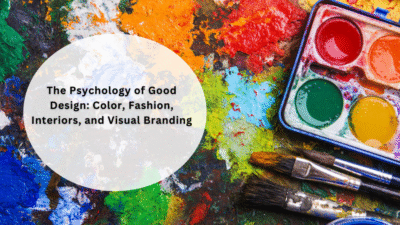Interior design is no longer just about aesthetics or making spaces look beautiful. It plays a crucial role in how we experience environments—be it a home, office, classroom, or commercial setup. Understanding the importance of interior design goes beyond décor and delves into how spaces can influence mood, productivity, comfort, and even business success.
As society becomes more conscious of well-being, sustainability, and user experience, the demand for skilled interior designers has grown. From personalized homes to functional offices and immersive retail spaces, interior design now touches nearly every aspect of modern life.
The Growing Importance of Interior Design
At its core, interior design is about enhancing the quality of interior spaces through thoughtful planning, material selection, and creative design strategies. Here’s why the importance of interior design is more relevant than ever:
- Functionality: A well-designed space isn’t just attractive—it supports its intended purpose. Whether it’s an efficient kitchen layout or a collaborative workspace, good design makes daily tasks easier.
- User Experience: Design affects how people feel and behave in a space. Calm colors and cozy textures in a bedroom, for example, can promote relaxation, while vibrant tones in a café may boost energy and social interaction.
- Health and Well-being: Natural lighting, ergonomic furniture, and proper ventilation contribute to physical and mental well-being. Interior design integrates these elements for healthier living and working environments.
- Sustainability: With a focus on eco-friendly materials and energy-efficient solutions, interior design contributes to greener lifestyles and responsible consumption.
Exploring the Diverse Types of Interior Design
Interior design is not one-size-fits-all. Different styles cater to varied functions, aesthetics, and user needs. Here are some popular types of interior design to understand:
- Modern Design: Characterized by clean lines, minimalism, and neutral tones, modern design focuses on simplicity and functionality.
- Traditional Design: Drawing inspiration from classic European decor, it includes ornate furniture, rich colors, and symmetry.
- Industrial Design: Exposed brick, metal fixtures, and raw finishes define this urban, edgy style.
- Scandinavian Design: Minimalist yet cozy, it emphasizes natural light, pale color palettes, and wood elements.
- Boho Theme Decor: The boho theme decor is all about free-spirited expression. Think layered textiles, eclectic furnishings, plants, and global accents. It’s ideal for creative individuals who love mixing colors, cultures, and vintage finds.
- Minimalist Design: Focused on simplicity and decluttering, it values “less is more” through neutral palettes and essential furnishings.
- Contemporary Design: Often confused with modern design, contemporary design reflects current trends and is more fluid in nature.
Each of these styles offers a unique way to shape interiors based on the purpose of the space and the personality of its users.
Interior Design Across Industries: Beyond Homes
One of the most exciting aspects of interior design today is its cross-industry application. It’s not limited to residential projects anymore. Here’s a look at how interior design supports and enhances different sectors:
- Business and Corporate Spaces: In the corporate world, office design affects employee satisfaction, retention, and productivity. Open layouts, breakout zones, and wellness spaces are now part of strategic business planning.
- Retail and Hospitality: In retail, interior design influences customer experience and purchasing behavior. From window displays to layout flow, every detail counts. Similarly, in hospitality, thoughtful design creates memorable guest experiences, from boutique hotels to themed restaurants.
- Education: Modern learning spaces are being redesigned to support collaboration, creativity, and comfort. Classroom layout, lighting, and materials can improve focus and learning outcomes.
- Healthcare: Hospital and clinic interiors impact patient recovery and staff efficiency. Color schemes, noise control, and intuitive design make medical environments more welcoming.
- Real Estate and Property Management: Developers and property managers invest in design to enhance property value and appeal to potential buyers or tenants.
The importance of interior design in these industries shows how design is now integral to strategy, not just surface-level styling.
Career Scope and Opportunities in Interior Design
With such a wide range of applications, interior design offers a vibrant and evolving career path. Students and professionals can explore various roles depending on their interests:
- Residential Interior Designer
- Commercial or Office Space Designer
- Retail and Visual Merchandising Expert
- Hospitality Designer (Hotels, Restaurants)
- Set and Exhibition Designer
- Sustainable/Green Design Consultant
- Furniture and Lighting Designer
In addition to designing, there’s scope in project management, design writing, 3D visualization, and even entrepreneurship.
As the market evolves, there’s growing demand for designers who understand technology, sustainability, and cultural narratives. This opens doors not just in India but globally, where interior aesthetics and spatial planning are gaining mainstream focus.
Tips and Suggestions for Aspiring Designers
If you’re planning to enter the world of interior design, here are a few practical suggestions:
- Build a strong portfolio with diverse projects—hand sketches, 3D renders, mood boards, and real-world case studies.
- Stay updated with trends—read design blogs, attend expos, and follow influential designers.
- Experiment with styles, including niche themes like boho theme decor to discover your design voice.
- Learn digital tools like AutoCAD, SketchUp, and Adobe Suite to present your ideas professionally.
- Understand client needs—successful design comes from listening and problem-solving, not just decorating.
Conclusion: Designing Spaces, Designing Futures
Interior design today is a powerful blend of art, science, and strategy. Whether it’s bringing warmth to a home, boosting productivity in an office, or creating an engaging retail environment, the importance of interior design cannot be overstated.
From exploring different types of interior design to embracing expressive styles like boho theme decor, this field is full of possibilities. And with its relevance across industries—business, education, healthcare, and beyond—interior design is more than a creative choice; it’s a future-ready career.



